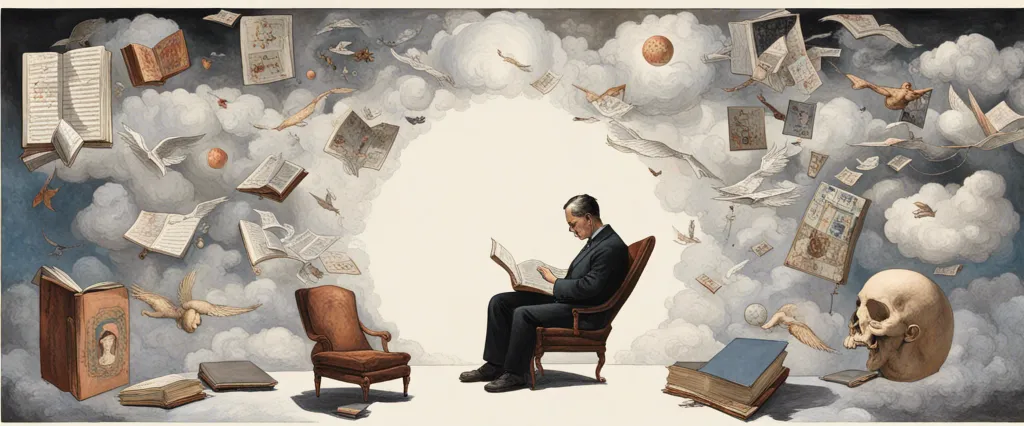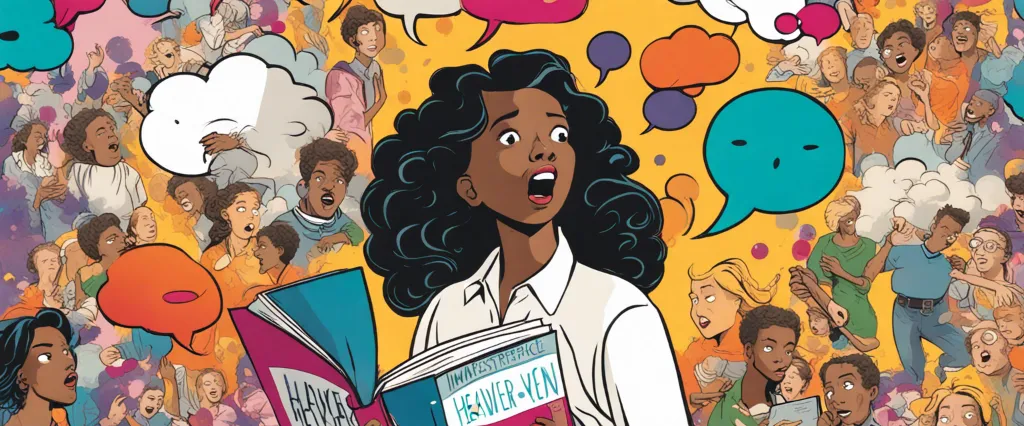
In Charles R. Cross‘s compelling biography, “Heavier Than Heaven,” readers are taken on an intimate journey through the tumultuous life of one of rock music’s pioneers and cultural icons, Kurt Cobain. This meticulously researched book explores the enigmatic persona of Cobain, from his troubled childhood to his meteoric rise to fame as the lead singer of Nirvana, ultimately leading to his tragic demise. Through interviews with friends, family, and contemporaries, Cross pieces together the complex life of Cobain, shedding light on the man behind the myth and the impact he had on the music industry and society at large.
Charles R. Cross, a critically acclaimed writer and journalist, is renowned for his in-depth exploration of the lives of cultural icons. He has authored several books on figures such as Jimi Hendrix and Bruce Springsteen, showcasing his ability to delve into the depths of their lives and personas with unparalleled precision. With “Heavier Than Heaven,” Cross solidifies his position as a leading biographer, capturing the essence of Kurt Cobain in a raw and unfiltered manner, allowing readers to understand the man who forever altered the world of rock music.
Chapter 1: Troubled Childhood and Early Years
Chapter 1 of “Heavier Than Heaven” by Charles R. Cross delves into the troubled childhood and early years of Kurt Cobain, the iconic frontman of the band Nirvana. The chapter provides a deep understanding of the factors that shaped Cobain’s tumultuous life.
The narrative begins with Cobain’s birth in Aberdeen, Washington, in 1967. Cross highlights the stark contrast between Cobain’s parents: his mother, Wendy, was nurturing but struggled with mental health issues, while his father, Don, was absent and distant. As a child, Cobain endured the trauma of his parents’ divorce at a young age, which left him longing for stability and emotional support.
The chapter progresses to Cobain’s adolescence, a time marked by rebellion, creativity, and an obsession with music. Despite being a shy and introverted teenager, Cobain found solace in his guitar and art, pouring his emotions into his creations. The author notes the pivotal influence of punk rock bands such as the Melvins and the Sex Pistols on Cobain’s musical journey.
Cross also sheds light on Cobain’s struggle with his sexuality, as he questioned his own identity and faced bullying from peers who labeled him as gay. Additionally, the author explores Cobain’s strained relationship with his stepfather, Pat O’Connor, who frequently clashed with the young musician.
The chapter concludes with Cobain’s expulsion from high school due to his rebellious behavior and drug experimentation, leading him down a path of addiction and self-destruction. Cross sets the stage for the subsequent chapters, where he will delve deeper into Cobain’s musical development, the formation of Nirvana, and the subsequent challenges Cobain faced both personally and professionally.
In Chapter 1, Charles R. Cross provides a vivid depiction of Kurt Cobain’s troubled childhood and formative years, highlighting the seeds of pain and creativity that later emerged as defining elements of his legendary music career.
Chapter 2: Rise to Fame and Nirvana’s Success
Chapter 2 of “Heavier Than Heaven” by Charles R. Cross, titled “Rise to Fame,” explores the early success and the journey to fame experienced by American rock band Nirvana, specifically focusing on the band’s rise in popularity, their major label signing, and the release of their breakthrough album “Nevermind.”
The chapter begins by chronicling the band’s formation with Kurt Cobain, Krist Novoselic, and various drummers, including the eventual addition of Dave Grohl. It delves into the band’s tireless efforts to gain recognition, touring relentlessly and releasing their debut album “Bleach” on an indie label.
As their music gained critical acclaim and a growing fan base, Nirvana attracted the attention of major record labels. Subsequently, the chapter describes their signing with Geffen Records, which provided them with greater resources and a wider platform to reach mainstream audiences.
The focus then shifts to the making and release of “Nevermind” in September 1991. The album’s captivating lead single, “Smells Like Teen Spirit,” became an overnight sensation, propelling Nirvana into the realms of global fame. The chapter examines how the band and their music became emblematic of the youth culture, describing how Kurt Cobain’s lyrics resonated with disenchanted teenagers of the era.
Furthermore, the chapter unravels the effect of Nirvana’s sudden rise to fame on the band members, particularly Cobain, who began to grapple with the pressures and overwhelming attention brought by their success. Cross explores how the band managed the transition from being an underground alternative act to achieving unprecedented mainstream success, capturing the sometimes tumultuous journey that came with their fame.
In summary, Chapter 2: “Rise to Fame and Nirvana’s Success” in “Heavier Than Heaven” encapsulates the crucial period in Nirvana’s career when they transitioned from being a struggling, yet critically acclaimed, band to becoming a worldwide sensation following the release of their iconic album, “Nevermind.”
Chapter 3: Kurt Cobain’s Personal Struggles
Chapter 3 of “Heavier Than Heaven” explores the personal struggles of Kurt Cobain, the lead singer of the band Nirvana, as described by Charles R. Cross. The chapter delves into Cobain’s early life, his troubled relationships, and the beginning of his music career.
The chapter starts by highlighting Cobain’s challenging childhood, growing up in a broken home and dealing with his parents’ divorce at an early age. These experiences had a profound impact on his emotional well-being, leading him to become a loner and develop a rebellious attitude towards authority figures.
Cross then focuses on Cobain’s complex relationships, particularly his tumultuous romance with Tracy Marander. Although she was a source of stability in his life during their six-year relationship, Cobain struggled with feelings of insecurity and fear of abandonment, which ultimately contributed to their breakup.
As Cobain’s music career begins to take off, the chapter explores the immense pressure he faced as the face of the grunge movement. Despite his talent and success, Cobain battled with depression and substance abuse, often using heroin to escape the pain and anxiety he experienced. Cross explores Cobain’s self-destructive tendencies, highlighting his multiple suicide attempts and his fascination with death.
Chapter 3 concludes with Cobain’s increasing struggles with addiction and mental health issues, ultimately setting the stage for the tragic end that awaits him in later years. The author paints a vivid picture of Cobain’s personal battles, offering insight into the various factors that contributed to his iconic and troubled persona.
Chapter 4: Relationships and Love Life

Chapter 4 of “Heavier Than Heaven” by Charles R. Cross delves into the tumultuous relationships and love life of Kurt Cobain, the legendary frontman of the band Nirvana. This chapter explores Cobain’s complex emotional journey, from his early romantic relationships to his eventual marriage with Courtney Love.
Cross begins by detailing Cobain’s teenage years and his first romantic experiences with girlfriends. He had a series of passionate but unstable relationships, which foreshadowed the tumultuous nature of his future love life. It becomes clear that Cobain sought deep connections, but struggled with trust and commitment.
The chapter then moves on to Cobain’s relationship with Tracy Marander, his long-term girlfriend during the early days of Nirvana. Marander played a significant role in providing stability and support for Cobain during this crucial period of his musical career. However, as Cobain’s fame grew, so did his personal demons, putting a strain on their relationship, ultimately leading to their breakup.
The narrative then explores Cobain’s infatuation with Tobi Vail, the drummer for the punk band Bikini Kill. Their brief but intense relationship left a lasting impact on Cobain, influencing both his music and ideological beliefs.
The chapter culminates in Cobain’s eventual marriage to Courtney Love, lead singer of the band Hole. Cross portrays their relationship as a chaotic love affair, defined by drug abuse, creative clashes, and intense passion. Cobain’s marriage to Love became the subject of intense media scrutiny, exacerbating his already fragile mental state.
Overall, Chapter 4 reveals the complex nature of Cobain’s relationships, highlighting his craving for deep connections and his struggle to maintain them amidst personal and creative turmoil.
Chapter 5: Battle with Addiction
Chapter 5: Battle with Addiction of the book “Heavier Than Heaven” by Charles R. Cross delves into the struggles and battles of Kurt Cobain, the legendary frontman of the band Nirvana, with addiction throughout his life.
The chapter begins by exploring Cobain’s early encounters with drugs, discussing how he initially experimented out of curiosity, seeking an escape from his troubled childhood and family issues. Cocaine and LSD were his early substances of choice, but it was heroin that would eventually consume his life. Cross vividly describes the descent into addiction, as Cobain becomes increasingly dependent on heroin to numb his emotional pain and fuel his creative energy.
As Cobain rises to fame with Nirvana, his addiction worsens, affecting his health, relationships, and ability to perform. Cross highlights how Cobain’s drug use was not just a personal struggle but also a reflection of the larger grunge music scene of the time, where drug use was prevalent. However, Cobain’s addiction becomes a constant battle, leading him to numerous treatment centers and unsuccessful rehab attempts.
The chapter goes on to explore the impact of Cobain’s addiction on his marriage to Courtney Love and the birth of their daughter, Frances Bean. Cross delves into the volatile nature of their relationship, as both individuals struggle with their own addictions. The author also sheds light on Cobain’s complicated relationship with fame and how it further fueled his drug use.
Ultimately, Chapter 5 highlights the destructive cycle of addiction that Cobain was trapped in. It serves as an important reminder of the toll substance abuse can take on even the most talented and revered individuals, providing insight into the deeply troubled world that Cobain inhabited in his final years.
Chapter 6: Creative Process and Musical Legacy
Chapter 6: Creative Process and Musical Legacy of “Heavier Than Heaven” by Charles R. Cross explores the artistic journey and musical legacy of Kurt Cobain, the frontman of the influential rock band Nirvana. In this chapter, Cross delves into Cobain’s creative process, shedding light on his songwriting techniques and the inspirations behind his music.
The chapter begins by discussing the evolution of Cobain’s songwriting, from his early influences like the Beatles and punk rock to the distinctive style that Nirvana would become known for. Cross explores Cobain’s ability to blend raw emotion with catchy melodies, creating tracks that resonated with listeners on a deep level.
Additionally, the chapter delves into the darker aspects of Cobain’s creative process, examining the themes of depression, addiction, and mental health that permeated his music. Cross highlights how Cobain’s personal struggles became infused into his lyrics, making his songs both powerful and relatable for fans.
Furthermore, Cross examines the impact of Nirvana and Cobain’s music on popular culture. The author delves into the band’s rise to fame, exploring the mainstream success they achieved with their breakthrough album, “Nevermind.” Cross also discusses the lasting influence of Nirvana in the music industry, as the band’s grunge sound and Cobain’s anguished vocals transformed the alternative rock scene.
In conclusion, Chapter 6 of “Heavier Than Heaven” provides a comprehensive exploration of Cobain’s creative process and the enduring legacy of Nirvana. By examining Cobain’s songwriting techniques and the deep emotional resonance of his music, Cross offers readers a deeper understanding of Cobain’s artistry and the impact he had on the world of music.
Chapter 7: Mental Health Decline
Chapter 7: Mental Health Decline of the book “Heavier Than Heaven” by Charles R. Cross discusses the deteriorating mental health of the iconic musician Kurt Cobain. The chapter delves into the various factors and experiences that contributed to Cobain’s struggles.
Cross highlights how Cobain’s childhood, marked by his parents’ divorce and his feelings of abandonment, scarred him emotionally. As a teenager, Cobain faced societal rejection and developed a deep-seated anger and resentment towards the world. These early experiences set the stage for his later mental health decline.
Cross then explores Cobain’s increasing drug use and how it became a form of self-medication for his undiagnosed mental health issues. As fame and success followed, the pressures intensified, exacerbating his drug dependence and depression. The chapter provides insights into Cobain’s struggles with fame, his turbulent relationship with Courtney Love, and the strain these factors placed on his mental well-being.
Cross also examines Cobain’s recurring health problems, including chronic stomach pains, which were likely caused by both his drug use and emotional distress. These physical ailments further contributed to his mental decline and pushed him deeper into addiction.
Throughout the chapter, Cross highlights the multiple attempts Cobain made at finding help, attending therapy sessions, and seeking solace in various treatments. However, these efforts were often impeded by his resistance to medication and his reluctance to fully embrace the help being offered.
By the end of Chapter 7, it becomes clear that Kurt Cobain’s mental health was rapidly deteriorating, leading to the tragic conclusion that the world would ultimately face in the following chapters.

Chapter 8: Tragic End and Legacy
Chapter 8: Tragic End and Legacy of the book “Heavier Than Heaven” by Charles R. Cross recounts the final years of Kurt Cobain’s life, leading up to his tragic end. The chapter begins by exploring Cobain’s struggles with addiction, depression, and his tumultuous relationship with his wife, Courtney Love.
Cross vividly describes Cobain’s deteriorating mental and physical state, focusing on his increasing drug use and isolation. The author delves into Cobain’s desperate attempts to seek help, including numerous rehab stints and interventions, but ultimately, his addiction and mental health issues proved insurmountable.
The chapter culminates in Cobain’s suicide on April 5, 1994, at the age of 27. Cross provides a detailed account of the discovery of Cobain’s body and the subsequent media frenzy that ensued. The author highlights the immense impact Cobain’s death had on the music world and the cultural landscape of the early 1990s, solidifying his status as an iconic figure.
Furthermore, Cross explores the immediate aftermath of Cobain’s death, including mourners leaving tributes outside Cobain’s home and the thorough investigation surrounding the circumstances of his suicide. The chapter also delves into the controversial theories and conspiracy theories that arose following his death.
To conclude, Chapter 8 details the tragic end of Kurt Cobain’s life and the lasting legacy he left behind. It encapsulates the profound impact Cobain had on the world of music and the enduring fascination with his life, death, and artistic contributions.
After Reading
In conclusion, “Heavier Than Heaven” by Charles R. Cross provides a comprehensive exploration of the life and tragic death of rock icon Kurt Cobain. Through meticulous research and interviews, Cross dives deep into Cobain’s turbulent childhood, rise to fame with Nirvana, and battles with addiction, mental illness, and the pressures of stardom. The book paints a vivid and complex portrait of a troubled yet brilliant artist, shedding light on his struggles, creative genius, and the cultural impact he left behind. Ultimately, “Heavier Than Heaven” not only pays homage to Cobain’s musical legacy but also delves into the human behind the legend, leaving readers with a bittersweet understanding of the enigmatic figure who forever changed the landscape of rock music.
1. Educated: A Memoir” by Tara Westover – This powerful memoir tells the story of Tara Westover’s journey from growing up in a strict and abusive household in rural Idaho to eventually earning a PhD from Cambridge University. It is a gripping exploration of the power of education and the resilience of the human spirit.
2. “The Kite Runner” by Khaled Hosseini – Set in Afghanistan, “The Kite Runner” follows the lives of two childhood friends, Amir and Hassan, whose lives are forever changed by a traumatic event. This emotionally charged novel explores themes of friendship, guilt, redemption, and the lasting impact of personal choices.
3. “The Shadow of the Wind” by Carlos Ruiz Zafón – Set in post-war Barcelona, this captivating gothic mystery novel follows a young boy named Daniel who discovers a book called “The Shadow of the Wind.” As he delves into the book’s author and its hidden past, Daniel finds himself embroiled in a dangerous web of secrets and intrigue.
4. The Alchemist” by Paulo Coelho – This internationally acclaimed novel tells the enchanting tale of Santiago, a young Andalusian shepherd who embarks on a journey to fulfill his dreams. Through his encounters with different characters and experiences, Santiago learns about the importance of following one’s heart and chasing the true meaning of life.
5. “To Kill a Mockingbird” by Harper Lee – A classic of American literature, this thought-provoking novel is set in the racially charged Deep South during the 1930s. Through the eyes of young Scout Finch, Harper Lee explores themes of racism, injustice, and the importance of empathy. It is a timeless tale that reminds us of the power of standing up for what is right, even in the face of adversity.



